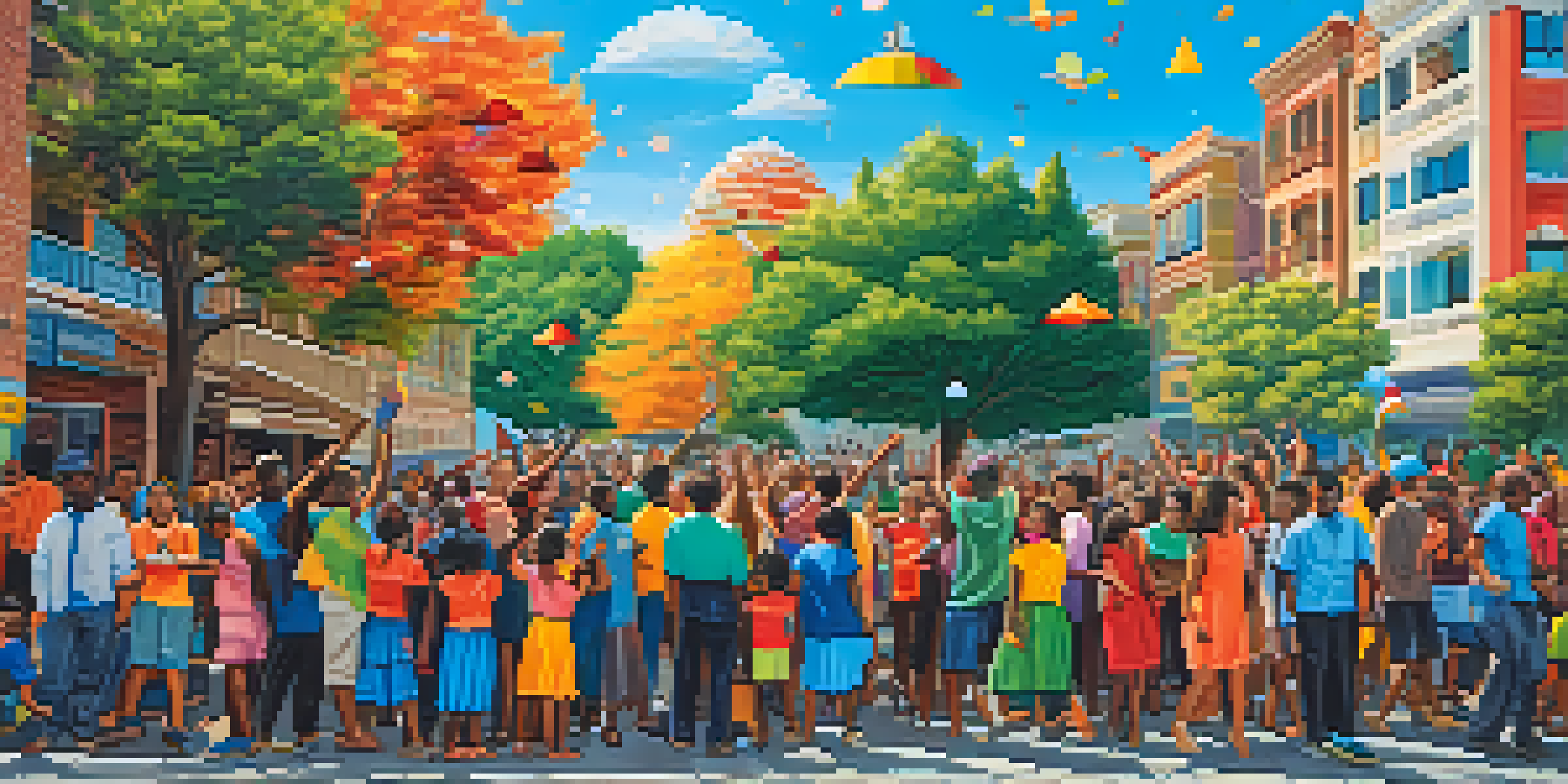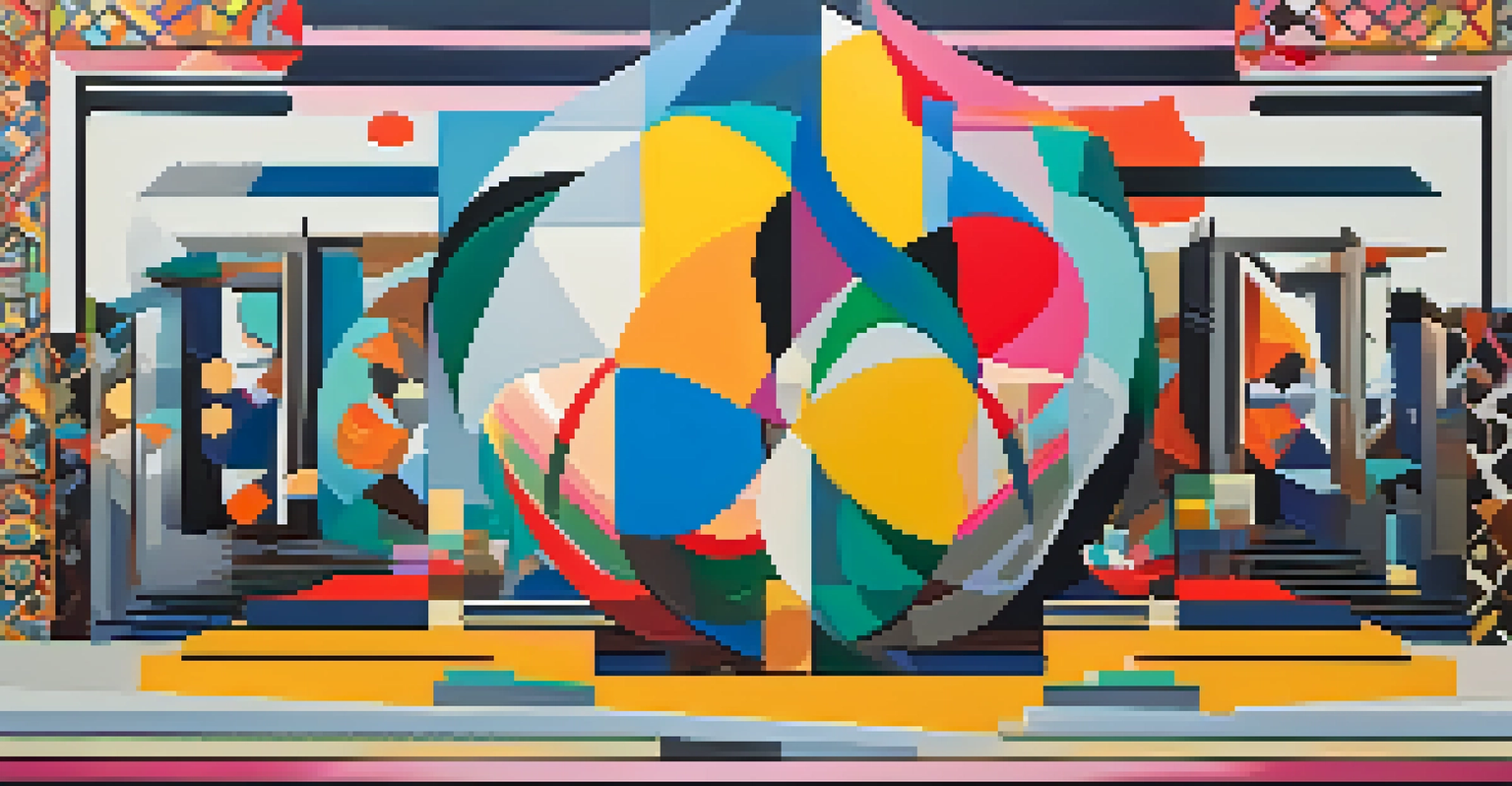The Evolution of Cultural Identity Through Artistic Movements

Understanding Cultural Identity in Art
Cultural identity refers to the sense of belonging to a particular group, shaped by factors like ethnicity, language, and traditions. In the realm of art, this identity manifests through the styles, themes, and mediums artists choose to express their experiences. By examining how artists connect their heritage with their creative expressions, we can better understand the nuances of cultural identity.
Art is the most beautiful of all lies.
Art acts as a mirror, reflecting the values and struggles of a society. For instance, during the Harlem Renaissance, African American artists used their work to celebrate their culture while addressing racial injustices. This interplay between identity and art not only enriches the cultural narrative but also fosters a sense of pride and community.
Related Resource
As we delve into various artistic movements, we can see how they either reinforce or challenge existing cultural identities. This dynamic relationship between art and culture invites us to explore deeper questions about who we are and how our identities evolve over time.
The Impact of the Renaissance on Cultural Identity
The Renaissance, a pivotal period from the 14th to the 17th century, marked a significant shift in cultural identity in Europe. This movement celebrated humanism, emphasizing individual potential and the exploration of classical antiquity. Artists like Leonardo da Vinci and Michelangelo not only created masterpieces but also influenced the way people perceived themselves and their place in the world.

Through art, the Renaissance sparked a renewed interest in science, philosophy, and literature, intertwining these fields with a sense of cultural identity. The emergence of perspective in painting, for example, transformed how artists represented space and human emotion, creating a more relatable experience for viewers. This shift laid the groundwork for how cultural narratives would be conveyed through visual means.
Art Reflects Cultural Identity
Cultural identity is expressed through the styles and themes that artists choose, reflecting their heritage and societal values.
As a result, the Renaissance didn't just change art; it redefined European cultural identity, leading to a more secular and human-centric worldview. This movement illustrated how artistic innovation can shape society's understanding of itself, a theme that recurs throughout history.
Romanticism: Emotion and Individualism in Art
The Romanticism movement of the late 18th and early 19th centuries emerged as a response to the Enlightenment's focus on reason. Romantic artists, such as Caspar David Friedrich, emphasized emotion, nature, and the individual's experience, allowing cultural identity to be expressed through personal narratives. This shift reflected a longing for freedom and a connection to the sublime in nature.
The role of the artist is to ask questions, not to answer them.
In literature, poets like William Wordsworth and Lord Byron explored the inner workings of the human spirit, further solidifying the idea that individual experiences could shape cultural narratives. The Romantic era encouraged people to explore their feelings and identities in relation to the world around them, fostering a sense of belonging in a rapidly changing society.
Related Resource
Thus, Romanticism became a powerful vehicle for cultural identity, emphasizing the importance of personal experience. This movement laid the groundwork for future artistic expressions that would continue to prioritize the individual's voice within the broader cultural context.
Modernism: Breaking Traditional Boundaries
Modernism, spanning roughly from the late 19th to mid-20th century, marked a radical departure from traditional artistic conventions. Artists like Pablo Picasso and Virginia Woolf sought to break free from established norms, exploring new forms and perspectives that challenged societal expectations. This artistic upheaval mirrored the complexities of modern cultural identities formed in a rapidly industrializing world.
The rise of abstraction and stream-of-consciousness writing allowed artists to express fragmented identities, reflecting the chaos of contemporary life. Additionally, Modernism embraced diverse cultural influences, as artists began to incorporate elements from non-Western art forms, further enriching the conversation around identity.
Modernism Redefines Cultural Norms
The Modernism movement broke traditional artistic boundaries, encouraging individuals to reassess their cultural identities amidst rapid societal changes.
By redefining what art could be, Modernism not only reshaped artistic practices but also encouraged individuals to reassess their cultural identities. This movement laid the foundation for postmodern thought, inviting ongoing exploration of identity in art.
Postmodernism: Plurality and Cultural Hybridity
Emerging in the late 20th century, Postmodernism challenged the notion of a singular cultural identity. Artists began to celebrate plurality and hybridity, often blending various styles, genres, and cultural influences in their work. This approach mirrored the complexities of globalization, where diverse identities coexist and interact in dynamic ways.
Postmodern artists, such as Cindy Sherman and Jeff Koons, often employed irony and pastiche, questioning traditional narratives and spotlighting the constructed nature of identity. This playful engagement with culture allowed for a broader understanding of how identity can be fluid and multifaceted, rather than fixed.
Related Resource
Consequently, Postmodernism invited audiences to reconsider their own identities in a world where cultures intersect. By embracing ambiguity and complexity, this movement expanded the conversation about cultural identity, making it more inclusive and reflective of contemporary experiences.
The Role of Technology in Shaping Artistic Identity
In today's digital age, technology plays a significant role in how cultural identities are expressed and perceived. From social media to digital art platforms, creators can share their work with a global audience instantly. This accessibility allows for diverse voices to emerge, enriching the cultural landscape and challenging traditional power dynamics in the art world.
Digital mediums have also transformed the way artists engage with their cultural heritage. For example, augmented reality can bring historical narratives to life, making them more relevant to contemporary audiences. This fusion of technology and art enables artists to explore their identities in innovative ways, often resulting in boundary-pushing works.
Technology Shapes Artistic Expression
In the digital age, technology enhances how cultural identities are expressed, allowing diverse voices to emerge and interact globally.
As technology continues to evolve, it reshapes our understanding of cultural identity and artistic creation. This intersection invites ongoing dialogue about how these changes influence the way we connect with art and each other.
Contemporary Art: A Reflection of Global Identities
Contemporary art is a vibrant tapestry that reflects the myriad of cultural identities in our globalized world. Artists today draw inspiration from diverse backgrounds, creating works that resonate with their unique experiences while engaging with universal themes. This blending of influences results in art that speaks to both personal and collective identities.
For instance, artists like Ai Weiwei and Yoko Ono use their platforms to address pressing social issues, highlighting the interconnectedness of cultural identities in a global context. Their work often serves as a commentary on politics, migration, and human rights, reminding us of the shared struggles that transcend borders.

Through contemporary art, we can witness the evolution of cultural identity as it adapts to an ever-changing world. This ongoing dialogue encourages us to embrace our differences while finding common ground, fostering empathy and understanding among diverse communities.